Dell Latitude 15 9520 review – new year, same issues
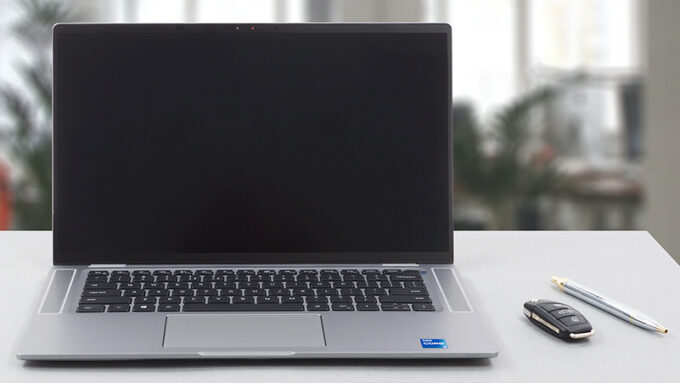 Basically, the Latitude 15 9520 is as premium as business computing can get. Well, at least according to Dell. It has all of the software good work the company has in its hands, plus some more. Weirdly, Dell has retained the 15.0-inch size of the display, whereas more and more manufacturers go for the larger 16-inch form factor, with a 16:10 aspect ratio.
Basically, the Latitude 15 9520 is as premium as business computing can get. Well, at least according to Dell. It has all of the software good work the company has in its hands, plus some more. Weirdly, Dell has retained the 15.0-inch size of the display, whereas more and more manufacturers go for the larger 16-inch form factor, with a 16:10 aspect ratio.
Ultimately, this makes the laptop extremely small. It is even hard to consider it as a 15-incher, but what is better is that Dell promises a full sRGB coverage, regardless of whether you go for the 1080p or the UHD option.
A big difference over last year’s model should be the processor lineup. Instead of the Comet Lake-U series, which was based on Intel’s archaic 14nm++++ architecture, you get Tiger Lake chips. They boast the best integrated graphics on the market, as well as a very good performance.
Speaking of which, last year’s Latitude 15 9510 had issues with sustaining high clocks for long periods of time. We really hope that Dell has fixed its software for their new device.
You can check the prices and configurations in our Specs System: https://laptopmedia.com/series/dell-latitude-15-9520/
Contents
Specs Sheet
- HDD/SSD
- up to 1000GB SSD
- M.2 Slot
- 1x 2230 M.2 PCIe x4 See photo
- RAM
- up to 32GB
- OS
- Windows 10 Pro, Windows 11 Pro, Windows 10 Home
- Battery
- 49Wh, 4-cell, 88Wh, 6-cell
- Body material
- Aluminum
- Dimensions
- 340.20 x 215.80 x 9.13 ~ 14.84 mm (13.39" x 8.50" x 0.36")
- Weight
- 1.40 kg (3.1 lbs)
- Ports and connectivity
- 1x USB Type-A
- 3.2 Gen 1 (5 Gbps), Power Delivery (PD)
- 2x USB Type-C
- Thunderbolt 4, Power Delivery (PD), DisplayPort
- HDMI
- 2.0
- Card reader
- microSD (SD/SDHC/SDXC)
- Ethernet LAN
- Wi-Fi
- 802.11ax
- Bluetooth
- 5.1
- Audio jack
- 3.5mm Combo Jack
- microSIM Card Slot
- Features
- Fingerprint reader
- optional
- Web camera
- HD
- Backlit keyboard
- optional
- Microphone
- Quad-array microphones
- Speakers
- 2x 5W, SoundWire 1.1
- Optical drive
- Security Lock slot
- Wedge Lock Slot
All Dell Latitude 15 9520 configurations
What’s in the box?
Inside this laptop’s rather premium package, you will find the mandatory paperwork and a 65W USB Type-C charger.
Design and construction
So, let’s start with the obvious – the design. This laptop is really well built and uses aluminum for both its lid and body. They are really resistant to flex and offer a cool touch feeling. What is even more impressive, is that the device’s profile is 9.13mm in the front and 14.84mm at the rear. Respectively, the weight stands at 1.40 kg, while the clear benefit of the smaller 15.0-inch display is that the footprint is significantly smaller than the conventional 15.6-inch laptop size.
Here, the lid opens with a single hand. Moreover, it lifts the backside of the base slightly from the ground. On the other hand, to do so, you need to go way past the 90° mark, which is not ideal. As you can see, the laptop has extremely thin bezels all around the matte display. The top one houses an HD Web camera with an electronic privacy shutter, and an IR face recognition sensor. In addition to that, you get a proximity sensor, that can do magic when combined with Windows Hello.
Moving to the base, we see a slightly unusual layout for a 15-inch device. There is no NumberPad section, but on the bright side, the keyboard is really comfortable to use. It has decent key travel and clicky feedback. Its power button doubles as a fingerprint reader, while the huge grills flanking the keyboard are actually for sound. They hide two huge runners, rated at 4W each.
And below the keyboard, you will see the touchpad. It is not very big, but the glass surface offers a super smooth gliding experience. Tracking is exceptional as well.
Turn the laptop upside down, and you will see the ventilation grill. Here, the laptop draws cool air and exhausts it through a vent on the back.
Ports
On the left side, you will find an HDMI 2.0 connector, two Thunderbolt 4 ports, a MicroSD card slot, and optional SIM card and Smart Card slots. Then, on the right, you get a USB Type-A 3.2 (Gen. 1) port, an audio jack, and a lock slot.
Disassembly, upgrade options and maintenance
There are 9 captive Phillips-head screws separating you from this laptop’s internals. After you undo them, pry the bottom panel with a plastic tool, and lift it away from the chassis.
Inside, we see a 48.5Wh battery pack. Dell also sells the laptop with a larger 88Wh unit. To remove it from the device, you first have to unplug the battery connector. Then, you need to undo 5 Phillips-head screws. Then, carefully separate the cables from it, and take it away from the laptop.
Sadly, the memory here is soldered to the motherboard. However, you can pair the laptop with 8, 16, or 32GB of LPDDR4x RAM. As for the storage, there is one M.2 PCIe x4 slot, which only fits 30mm drives.
Cooling-wise, there are two heat pipes, connected to a heat sink, and a medium-sized fan.
Display quality
Dell Latitude 15 9520 has an IPS panel, model number AUO B150HAN-DKT39 (AUOFB91). Its diagonal is 15″ (38.1 cm), and the resolution is 1920 х 1080 pixels. The screen ratio is 16:9, and we are looking at a pixel density of – 147 ppi, and a pitch of 0.17 х 0.17 mm. The screen turns into Retina when viewed at distance equal to or greater than 58cm (24″) (from this distance one’s eye stops differentiating the separate pixels, and it is normal for looking at a laptop).

It has comfortable viewing angles. We offer images at 45° to evaluate image quality.

Also, a video with locked focus and exposure.
The measured maximum brightness of 463 nits in the middle of the screen and 426 nits as an average for the whole area, with a maximum deviation of 17%. The Correlated Color Temperature on a white screen is 6900K – a bit colder than the optimal for the sRGB standard of 6500K.
In the illustration below you can see how the display performs from a uniformity perspective. In other words, the leakage of light from the light source.
Values of dE2000 over 4.0 should not occur, and this parameter is one of the first you should check if you intend to use the laptop for color-sensitive work. The contrast ratio is very good – 1800:1.
To make sure we are on the same page, we would like to give you a little introduction to the sRGB color gamut and the Adobe RGB. To start, there’s the CIE 1976 Uniform Chromaticity Diagram that represents the visible specter of colors by the human eye, giving you a better perception of the color gamut coverage and the color accuracy.
Inside the black triangle, you will see the standard color gamut (sRGB) that is being used by millions of people on HDTV and on the web. As for the Adobe RGB, this is used in professional cameras, monitors, etc for printing. Basically, colors inside the black triangle are used by everyone and this is the essential part of the color quality and color accuracy of a mainstream notebook.
Still, we’ve included other color spaces like the famous DCI-P3 standard used by movie studios, as well as the digital UHD Rec.2020 standard. Rec.2020, however, is still a thing of the future and it’s difficult for today’s displays to cover that well. We’ve also included the so-called Michael Pointer gamut, or Pointer’s gamut, which represents the colors that naturally occur around us every day.
The yellow dotted line shows Dell Latitude 15 9520’s color gamut coverage.
Its display covers 96% of the sRGB/ITU-R BT.709 (web/HDTV standard) in CIE1976.
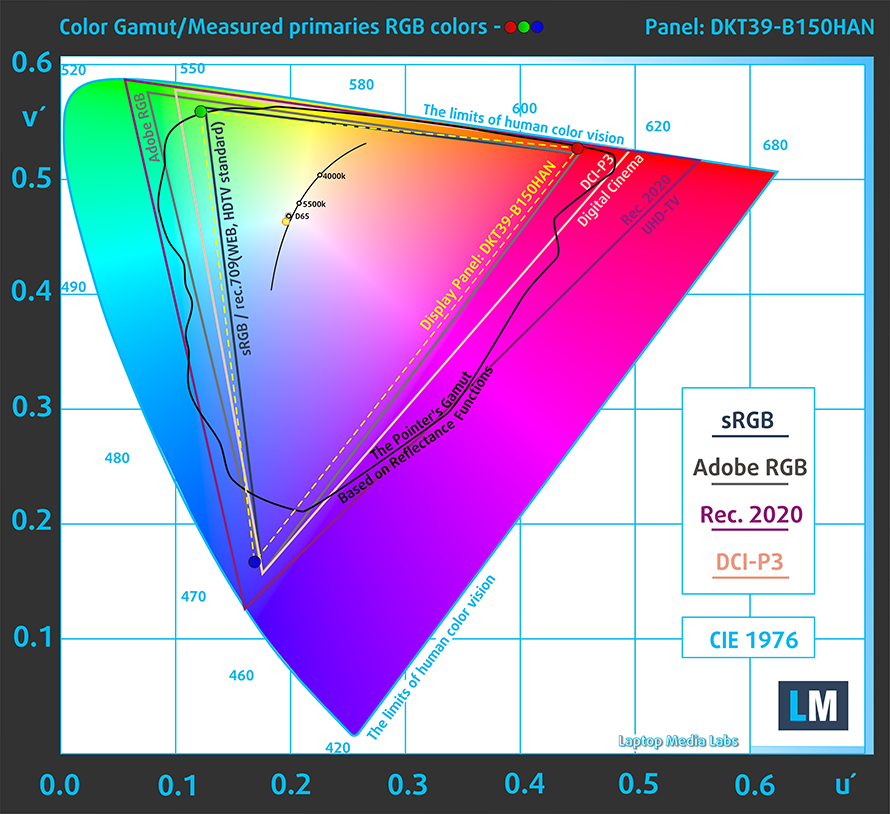
Our “Design and Gaming” profile delivers optimal color temperature (6500K) at 140 cd/m2 luminance and sRGB gamma mode.
We tested the accuracy of the display with 24 commonly used colors like light and dark human skin, blue sky, green grass, orange, etc. You can check out the results at factory condition and also, with the “Design and Gaming” profile.
Below you can compare the scores of Dell Latitude 15 9520 with the default settings (left), and with the “Gaming and Web design” profile (right).
The next figure shows how well the display is able to reproduce really dark parts of an image, which is essential when watching movies or playing games in low ambient light.
The left side of the image represents the display with stock settings, while the right one is with the “Gaming and Web Design” profile activated. On the horizontal axis, you will find the grayscale, and on the vertical axis – the luminance of the display. On the two graphs below you can easily check for yourself how your display handles the darkest nuances but keep in mind that this also depends on the settings of your current display, the calibration, the viewing angle, and the surrounding light conditions.
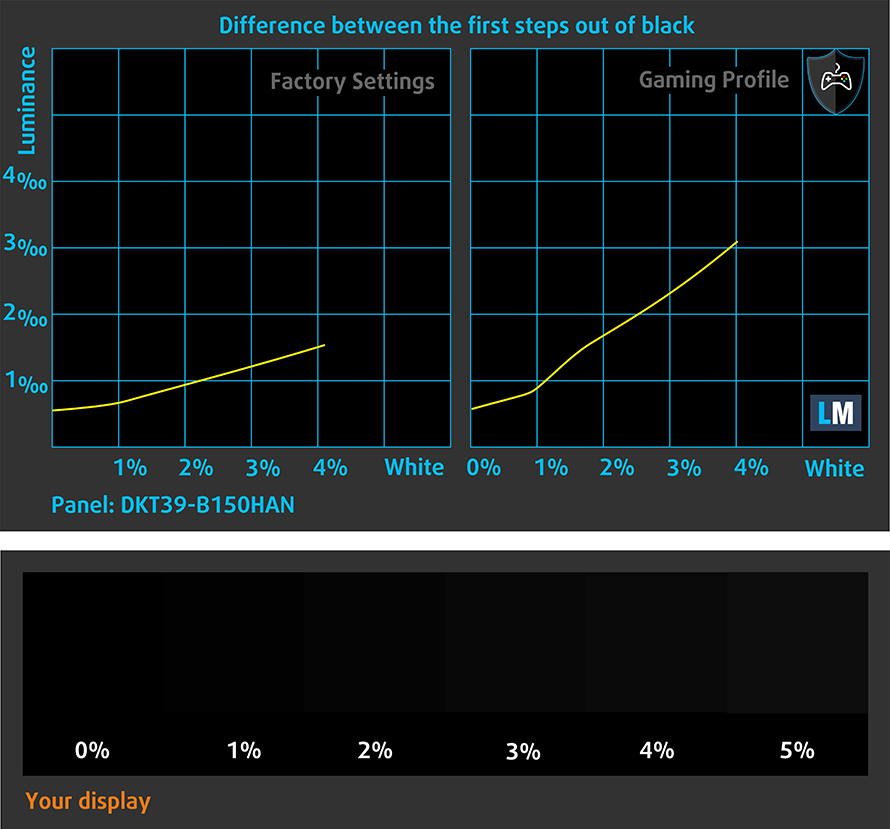
Response time (Gaming capabilities)
We test the reaction time of the pixels with the usual “black-to-white” and “white-to-black” method from 10% to 90% and vice versa.
We recorded Fall Time + Rise Time = 31 ms.

After that, we test the reaction time of the pixels with the usual “Gray-to-Gray” method from 50% White to 80% White and vice versa between 10% and 90% of the amplitude.
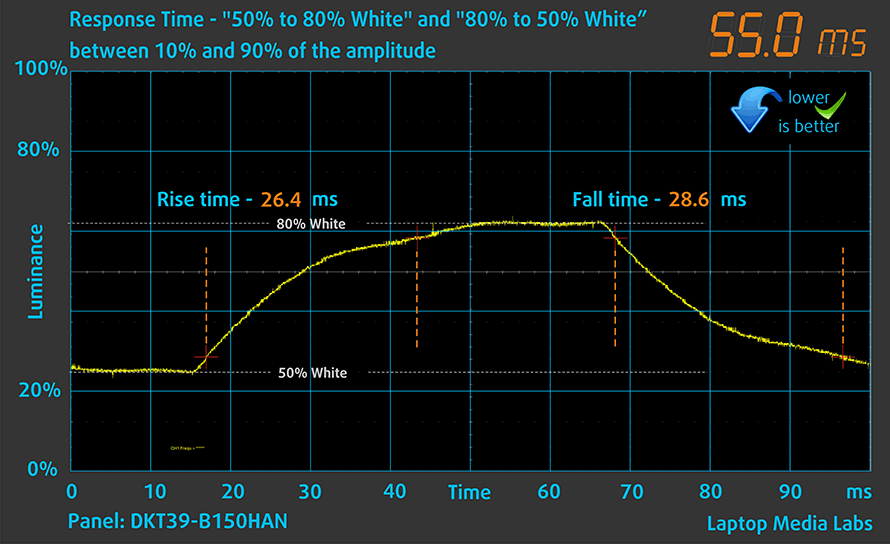
PWM (Screen flickering)
Pulse-width modulation (PWM) is an easy way to control monitor brightness. When you lower the brightness, the light intensity of the backlight is not lowered, but instead turned off and on by the electronics with a frequency indistinguishable to the human eye. In these light impulses, the light/no-light time ratio varies, while brightness remains unchanged, which is harmful to your eyes. You can read more about that in our dedicated article on PWM.
Dell Latitude 15 9520s screen doesn’t flicker at any brightness level. Thankfully, this enables you to work for extended periods of time, without the risk of further damaging your eyes and brain.
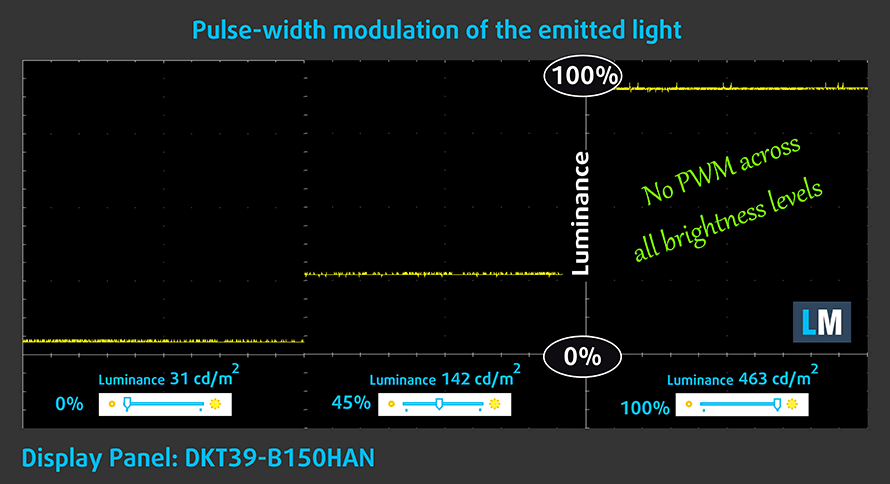
Blue light emissions
Installing our Health-Guard profile not only eliminates PWM but also reduces the harmful Blue Light emissions while keeping the colors of the screen perceptually accurate. If you’re not familiar with the Blue light, the TL;DR version is – emissions that negatively affect your eyes, skin, and your whole body. You can find more information about that in our dedicated article on Blue Light.
Buy our profiles
Since our profiles are tailored for each individual display model, this article and its respective profile package are meant for Dell Latitude 15 9520 configurations with 15″ FHD IPS AUO B150HAN-DKT39 (AUOFB91).
*Should you have problems with downloading the purchased file, try using a different browser to open the link you’ll receive via e-mail. If the download target is a .php file instead of an archive, change the file extension to .zip or contact us at [email protected].
Read more about the profiles HERE.
In addition to receiving efficient and health-friendly profiles, by buying LaptopMedia's products you also support the development of our labs, where we test devices in order to produce the most objective reviews possible.

Office Work
Office Work should be used mostly by users who spend most of the time looking at pieces of text, tables or just surfing. This profile aims to deliver better distinctness and clarity by keeping a flat gamma curve (2.20), native color temperature and perceptually accurate colors.

Design and Gaming
This profile is aimed at designers who work with colors professionally, and for games and movies as well. Design and Gaming takes display panels to their limits, making them as accurate as possible in the sRGB IEC61966-2-1 standard for Web and HDTV, at white point D65.

Health-Guard
Health-Guard eliminates the harmful Pulse-Width Modulation (PWM) and reduces the negative Blue Light which affects our eyes and body. Since it’s custom tailored for every panel, it manages to keep the colors perceptually accurate. Health-Guard simulates paper so the pressure on the eyes is greatly reduced.
Get all 3 profiles with 33% discount
Sound
Dell Latitude 15 9520’s speakers are loud and clear, and we saw no deviations across the entire frequency spectrum. Interestingly, like last year, the speakers make the chassis vibrate, when you play them at a loud volume.
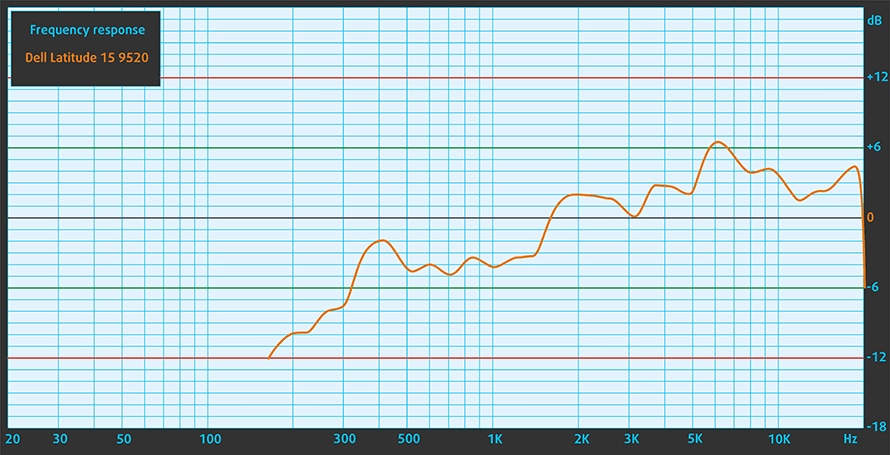
Drivers
All drivers and utilities for this notebook can be found here: https://www.dell.com/support/home/en-us/product-support/product/latitude-15-9520-2-in-1-laptop/drivers
Battery
Now, we conduct the battery tests with Windows Better performance setting turned on, screen brightness adjusted to 120 nits, and all other programs turned off except for the one we are testing the notebook with. This device is equipped with a 48.5Wh battery pack. It lasted us for 14 hours and 31 minutes of Web browsing, or 9 hours and 51 minutes of video playback.
In order to simulate real-life conditions, we used our own script for automatic web browsing through over 70 websites.
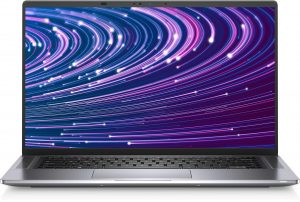
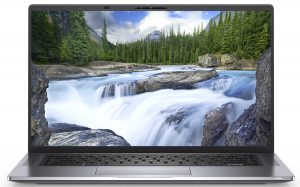
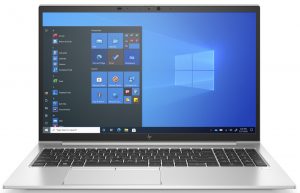
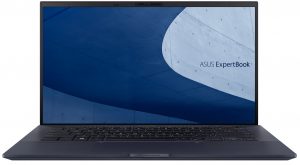
For every test like this, we use the same video in HD.




CPU options
You can pair this laptop with the Core i5-1135G7, Core i5-1145G7, or Core i7-1185G7.
Results are from the Cinebench R23 CPU test (the higher the score, the better)
Results are from our Photoshop benchmark test (the lower the score, the better)
Dell Latitude 15 9520 CPU variants
Here you can see an approximate comparison between the CPUs that can be found in the Dell Latitude 15 9520 models on the market. This way you can decide for yourself which Dell Latitude 15 9520 model is the best bang for your buck.
Note: The chart shows the cheapest different CPU configurations so you should check what the other specifications of these laptops are by clicking on the laptop’s name / CPU.
Results are from the Cinebench R23 CPU test (the higher the score, the better)
Results are from our Photoshop benchmark test (the lower the score, the better)
GPU options
For graphics, you get the integrated solution in one of the aforementioned processors.
Results are from the 3DMark: Time Spy (Graphics) benchmark (higher the score, the better)
Results are from the 3DMark: Fire Strike (Graphics) benchmark (higher the score, the better)
Results are from the 3DMark: Wild Life benchmark (higher the score, the better)
Results are from the Unigine Superposition benchmark (higher the score, the better)
Dell Latitude 15 9520 GPU variants
Here you can see an approximate comparison between the GPUs that can be found in the Dell Latitude 15 9520 models on the market. This way you can decide for yourself which Dell Latitude 15 9520 model is the best bang for your buck.
Note: The chart shows the cheapest different GPU configurations so you should check what the other specifications of these laptops are by clicking on the laptop’s name / GPU.
Results are from the 3DMark: Time Spy (Graphics) benchmark (higher the score, the better)
Results are from the 3DMark: Fire Strike (Graphics) benchmark (higher the score, the better)
Results are from the 3DMark: Wild Life (Graphics) benchmark (higher the score, the better)
Results are from the Unigine Superposition benchmark (higher the score, the better)
Gaming tests

| CS:GO | HD 1080p, Low (Check settings) | HD 1080p, Medium (Check settings) | HD 1080p, MAX (Check settings) |
|---|---|---|---|
| Average FPS | 137 fps | 88 fps | 51 fps |

| DOTA 2 | HD 1080p, Low (Check settings) | HD 1080p, Normal (Check settings) | HD 1080p, High (Check settings) |
|---|---|---|---|
| Average FPS | 134 fps | 66 fps | 51 fps |
Temperatures and comfort
Max CPU load
In this test we use 100% on the CPU cores, monitoring their frequencies and chip temperature. The first column shows a computer’s reaction to a short load (2-10 seconds), the second column simulates a serious task (between 15 and 30 seconds), and the third column is a good indicator of how good the laptop is for long loads such as video rendering.
Average core frequency (base frequency + X); CPU temp.
| Intel Core i5-1145G7 (15W TDP) | 0:02 – 0:10 sec | 0:15 – 0:30 sec | 10:00 – 15:00 min |
|---|---|---|---|
| Dell Latitude 15 9520 | 3.26 GHz @ 98°C @ 48W | 2.40 GHz @ 73°C @ 25W | 1.93 GHz @ 62°C @ 15W |
| Dell Latitude 14 3420 | 3.08 GHz @ 91°C @ 33W | 2.64 GHz @ 91°C @ 25W | 2.62 GHz @ 91°C @ 25W |
| Dell Latitude 15 3520 | 2.85 GHz @ 92°C @ 28W | 2.51 GHz @ 92°C @ 23W | 2.56 GHz @ 92°C @ 24W |
| Dell Latitude 13 5320 | 3.23 GHz @ 74°C @ 34W | 2.65 GHz @ 99°C @ 24W | 1.98 GHz @ 67°C @ 13W |
Weirdly, even when it is under “Ultra Performance” from the Dell Power Manager app, the Latitude 15 9520 prefers to stay cool, than to deliver what you are asking it for.
Comfort during full load
This is made worse by the fan noise, which is comparable to some gaming computers on the market. On the bright side, the keyboard is not too warm at any point in the test.
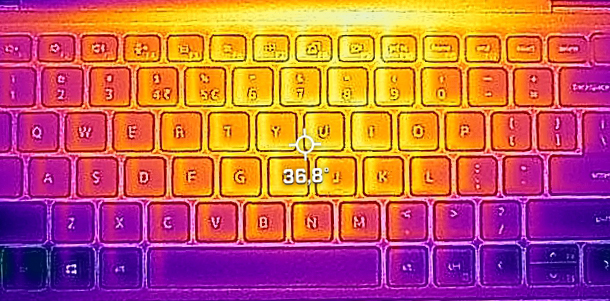
Verdict
 There are a few things we have to say. Firstly, we can’t believe this is the second year in a row, where the most premium business laptop from Dell can’t offer the best out of its processor. Indeed, it is much better than the 1.25 GHz sustained on the older device, but clearly, the cooling has the potential, and the manufacturer is not using it.
There are a few things we have to say. Firstly, we can’t believe this is the second year in a row, where the most premium business laptop from Dell can’t offer the best out of its processor. Indeed, it is much better than the 1.25 GHz sustained on the older device, but clearly, the cooling has the potential, and the manufacturer is not using it.
Secondly, the Latitude 15 9520 is an extremely well-built device with a super thin and light chassis and incredibly resistant structure. Its speakers are amazing, but we don’t really like how the entire chassis vibrates if you are listening to music on high volume.
Then comes the battery. Our unit came equipped with the smaller option – a 48.5Wh pack, which sounds too small for a 15-inch laptop. However, the results were nothing short of impressive, as we got 14 hours and 30 minutes of Web browsing, or nearly 10 hours of video playback on a single charge.
Dell Latitude 15 9520’s 15-inch IPS panel has a Full HD resolution, comfortable viewing angles, high maximum brightness, and a very high contrast ratio. Additionally, it covers 96% of the sRGB color gamut, and its backlight doesn’t use PWM for brightness adjustment. People, who need accurate color representation will be happy to learn that thanks to our Gaming and Web design profile, the device reaches an Average dE of only 1.0.
The I/O is also more than half-decent with two Thunderbolt 4 connectors, an HDMI port, a USB Type-A 3.2 (Gen. 1) port, and a MicroSD card slot. Some options include a Smart Card reader and a SIM card tray. As a matter of fact, you can spec the laptop with a 5G card, which is still a rarity in mobile computers.
Another set of useful features includes the IR face recognition sensor, the optional fingerprint scanner, and a proximity sensor.
Unfortunately, you won’t be able to upgrade the memory, which is a bummer, so choose carefully before buying. What is even more unfortunate, is that you are limited to 30mm M.2 SSDs.
At the end of the day, this laptop is not bad. Especially with all of Dell’s security software included. However, there are some areas that were not fixed from last year. Some of them may be resolved with a simple BIOS update, while others need more attention in the R&D department. Regardless, the Latitude 15 9520 comes at a premium, that not many people will find reasonable.
You can check the prices and configurations in our Specs System: https://laptopmedia.com/series/dell-latitude-15-9520/
Pros
- Up to 14.5 hours of Web browsing on a single charge (with the smaller battery)
- Great input devices
- 96% sRGB coverage and accurate color representation with our profile
- Two Thunderbolt 4 connectors (both can be used for charging)
- IR face recognition, fingerprint reader, and proximity sensor
- Quad-channel memory
- No PWM
Cons
- Some performance issues in long runs
- Memory is soldered to the motherboard


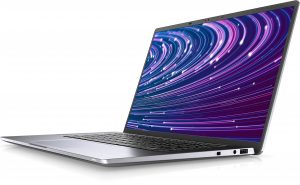
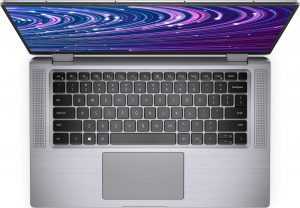
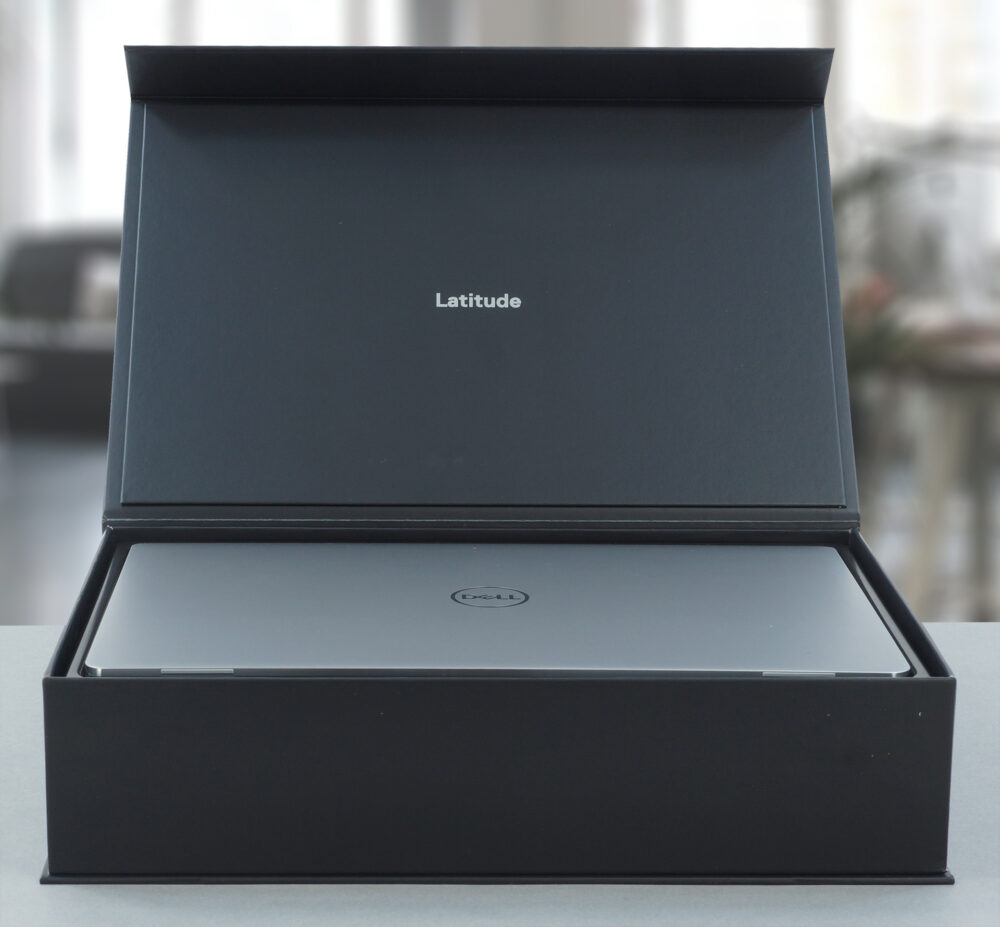
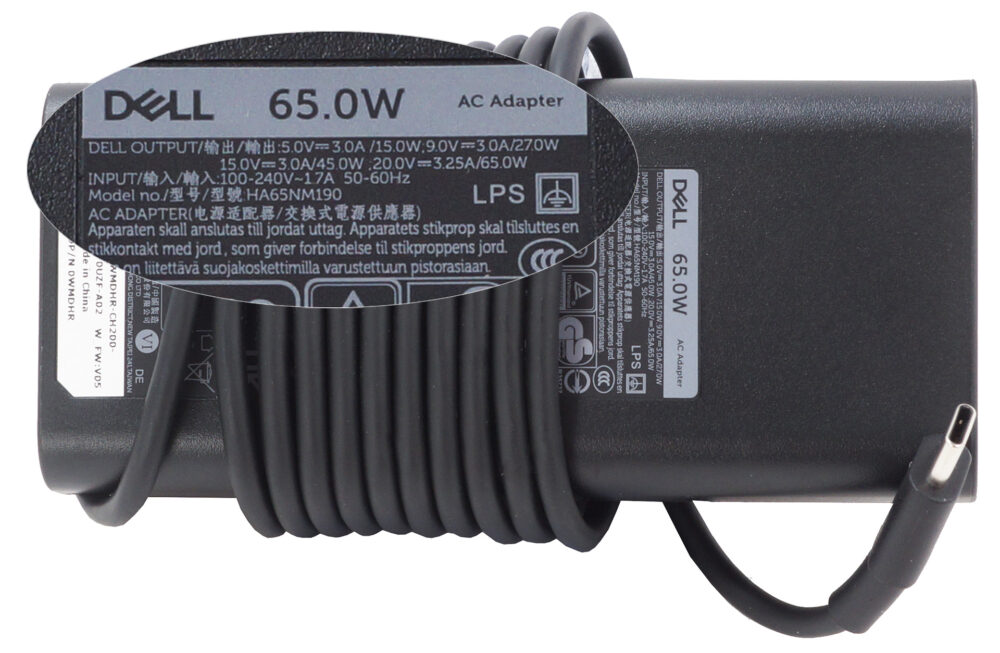

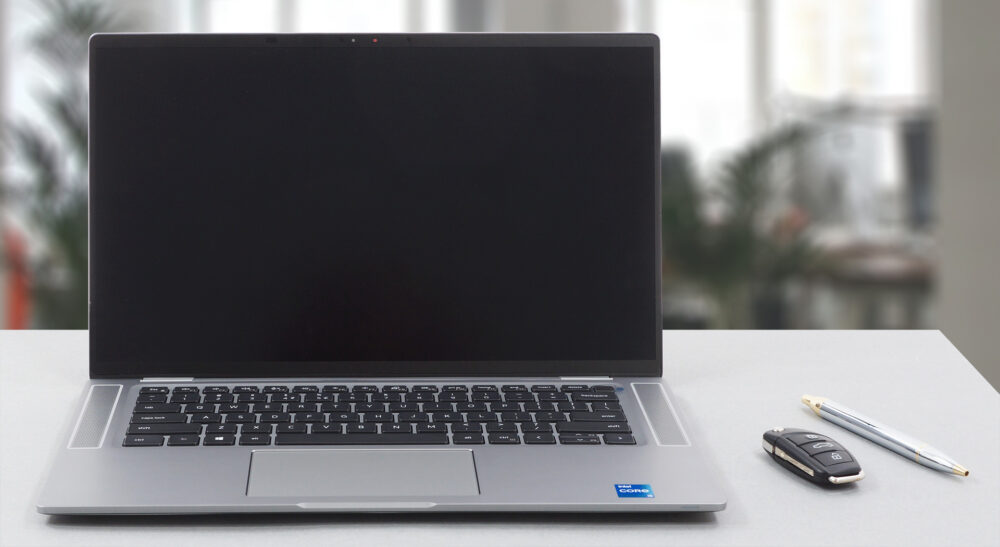
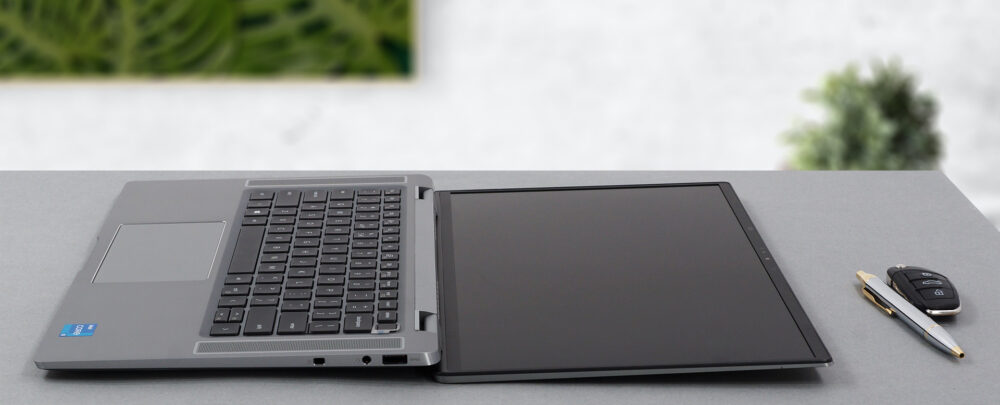
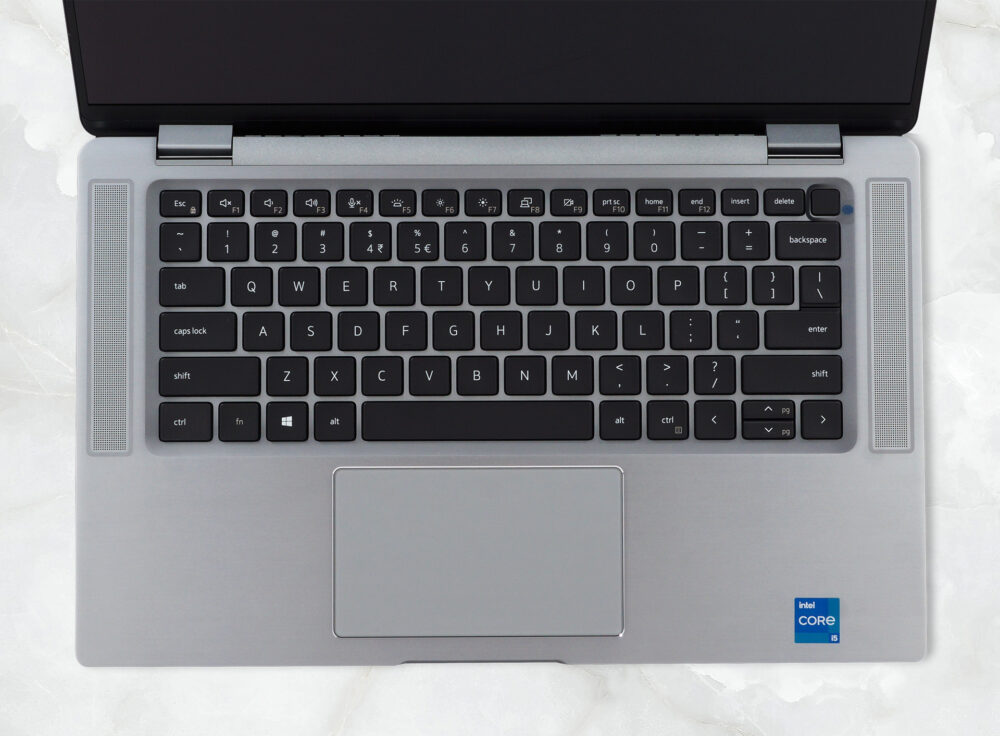
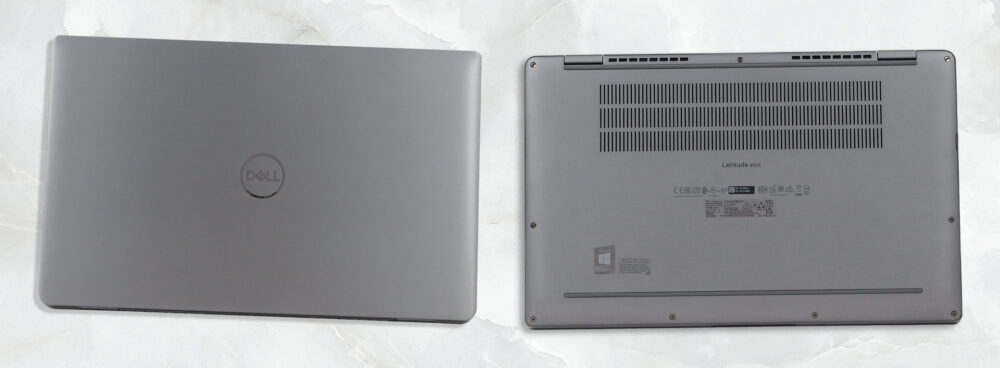


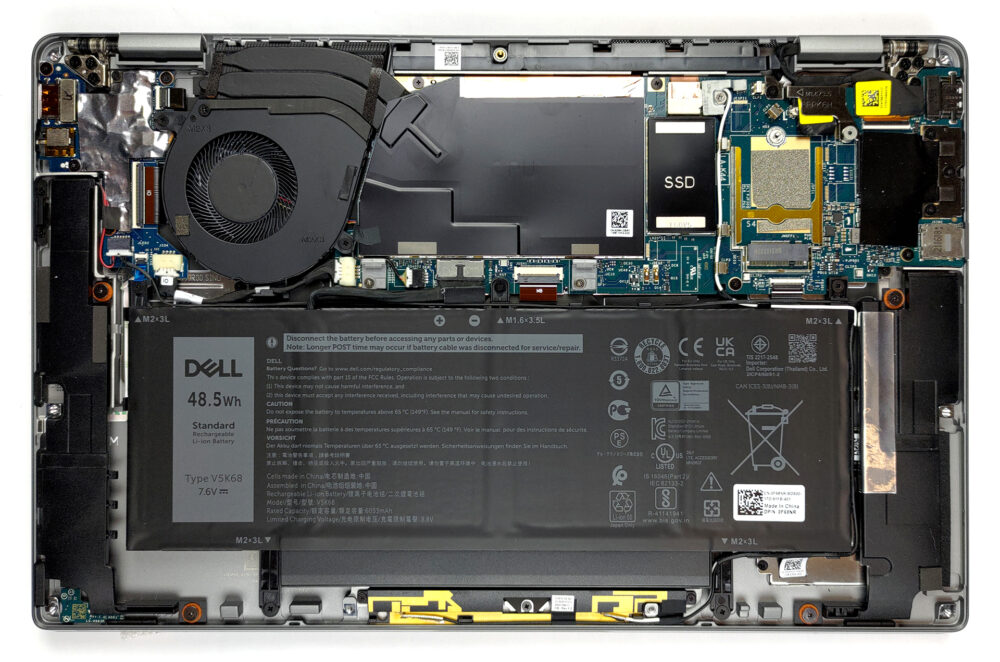
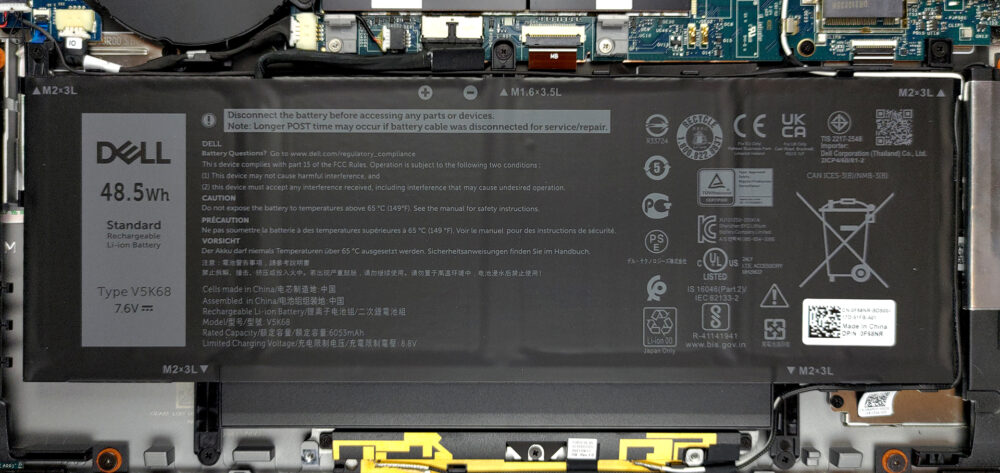
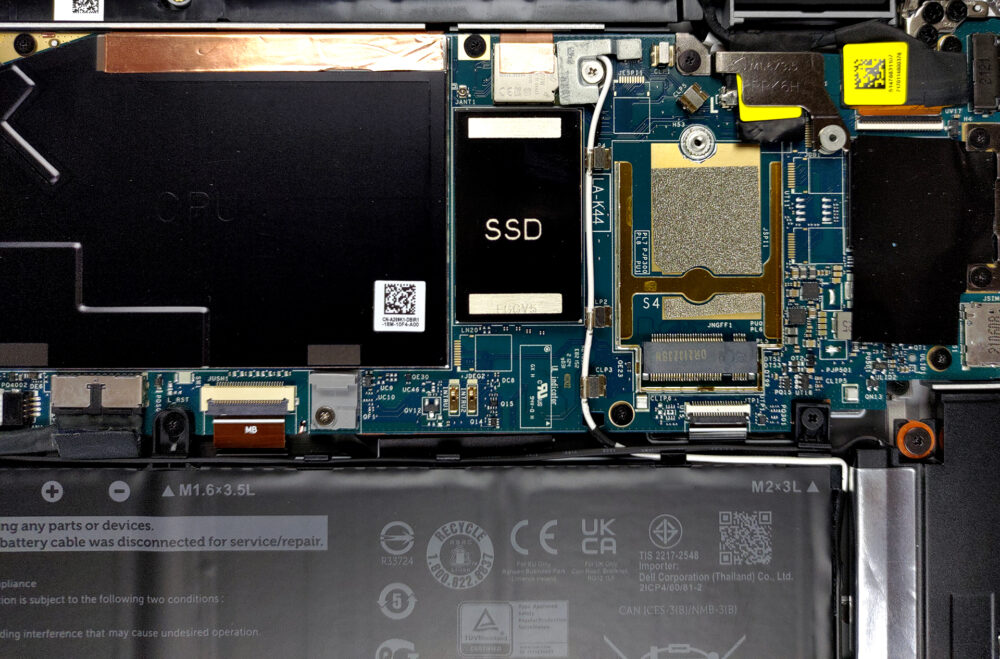
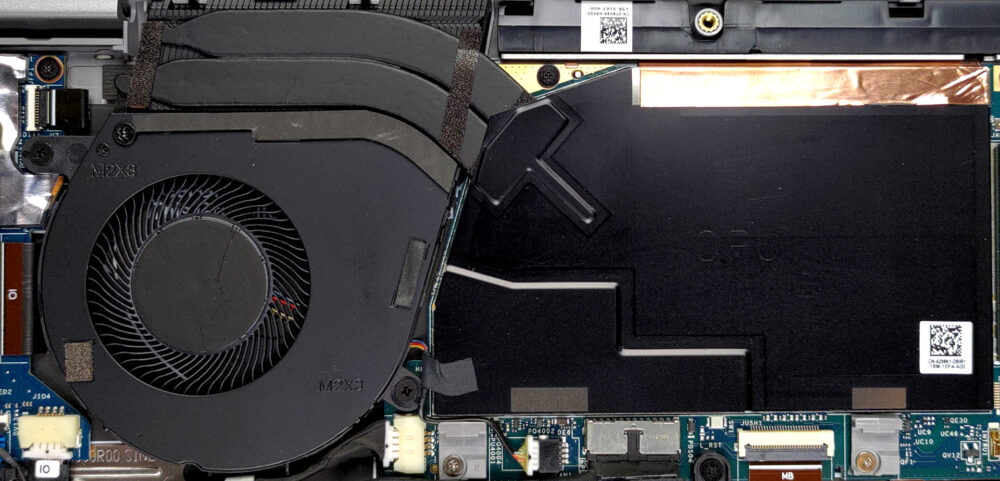




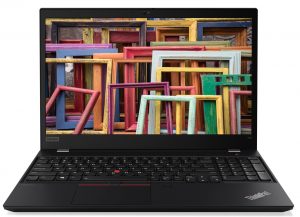
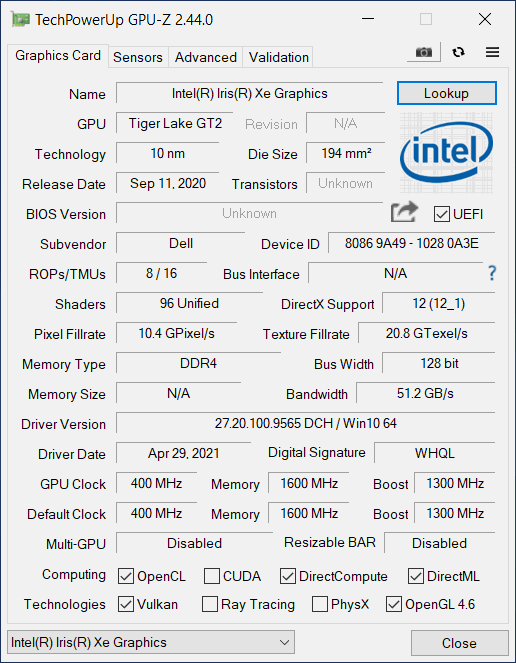








I have just done a back to back comparison with this laptop and a mid priced Mobile phone and I can honestly say that the audio quality of the output of this Dell Laptop at nearly $2000 is absolutely terrible and it makes every song listened to sound like there is a defect with the headphones, which there is not….if you like music, avoid this inferior audio output at all costs, just IMO and I think Dell need to rethink their choices of audio dacs